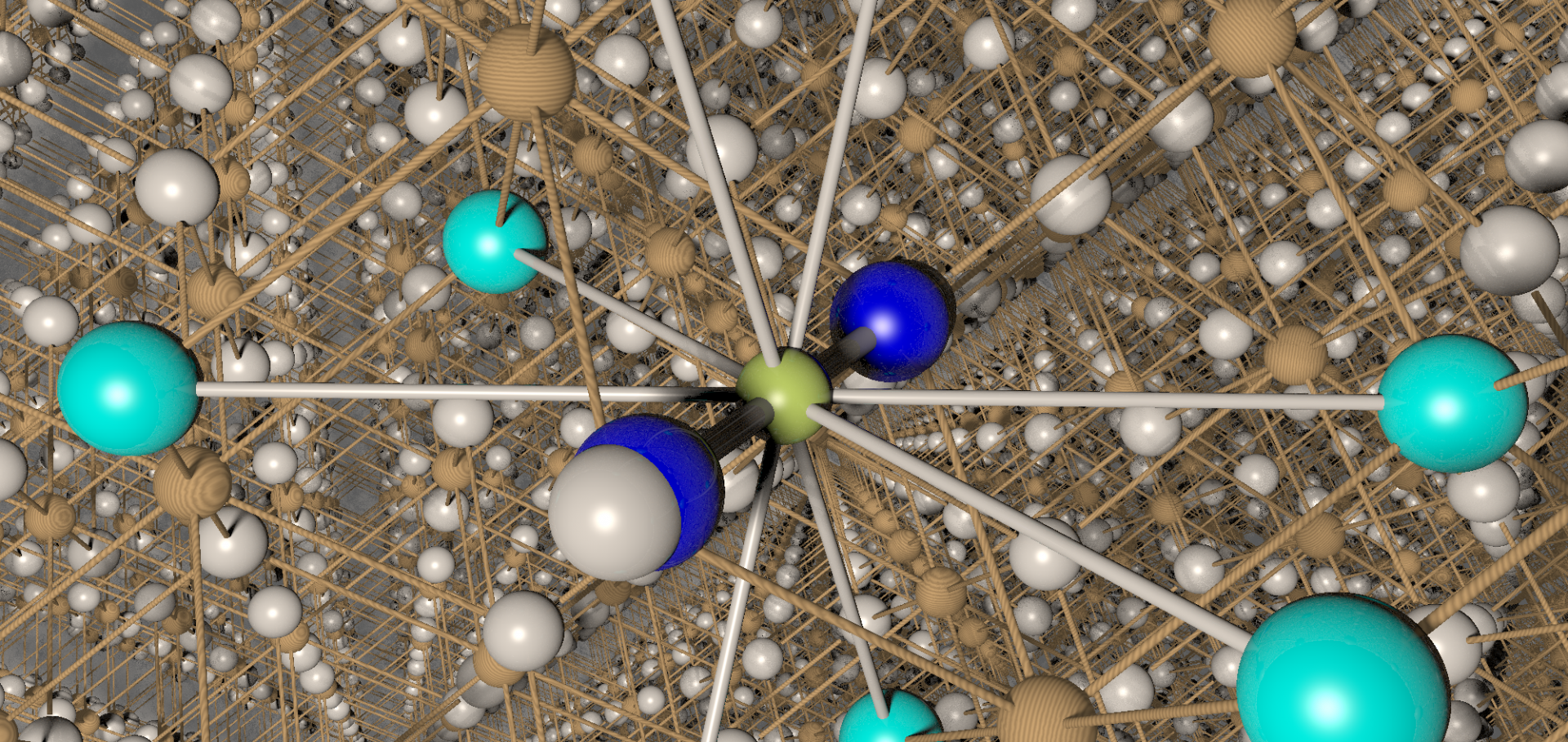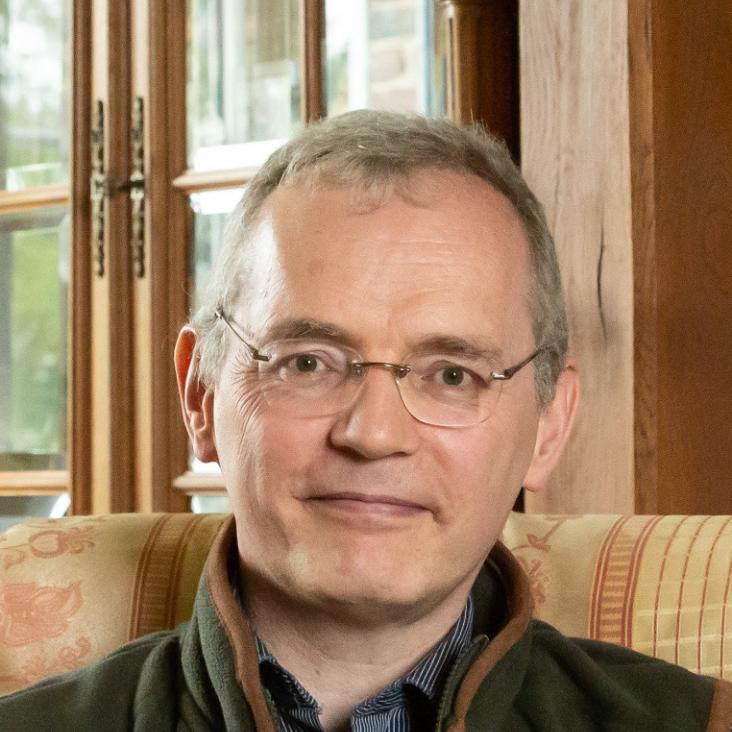Magnetostriction-driven muon localization in an antiferromagnetic oxide
Physical Review Letters American Physical Society 132:4 (2024) 046701
Abstract:
Magnetostriction results from the coupling between magnetic and elastic degrees of freedom. Though it is associated with a relatively small energy, we show that it plays an important role in determining the site of an implanted muon, so that the energetically favorable site can switch on crossing a magnetic phase transition. This surprising effect is demonstrated in the cubic rocksalt antiferromagnet MnO which undergoes a magnetostriction-driven rhombohedral distortion at the Néel temperature T_{N}=118 K. Above T_{N}, the muon becomes delocalized around a network of equivalent sites, but below T_{N} the distortion lifts the degeneracy between these equivalent sites. Our first-principles simulations based on Hubbard-corrected density-functional theory and molecular dynamics are consistent with the experimental data and help to resolve a long-standing puzzle regarding muon data on MnO, as well as having wider applicability to other magnetic oxides.Multi-band description of the upper critical field of bulk FeSe
(2023)
Multi-band description of the upper critical field of bulk FeSe
Physical Review B American Physical Society 108:18 (2023) 184507
Abstract:
The upper critical field of multi-band superconductors can be an essential quantity to unravel the nature of superconducting pairing and its interplay with the electronic structure. Here we experimentally map out the complete upper critical field phase diagram of FeSe for different magnetic field orientations at temperatures down to 0.3 K using both resistivity and torque measurements. The temperature dependence of the upper critical field reflects that of a multi-band superconductor and requires a two-band description in the clean limit with band coupling parameters favouring interband over intraband interactions. Despite the relatively small Maki parameter in FeSe of α ∼ 1.6, the multi-band description of the upper critical field is consistent with the stabilization of a FFLO state below T /Tc ∼ 0.3. We find that the anomalous behaviour of the upper critical field is linked to a departure from the single-band picture, and FeSe provides a clear example where multi-band effects and the strong anisotropy of the superconducting gap need to be taken into account.Essentials of signals and systems
Contemporary Physics Taylor & Francis 64:4 (2023) 320-320


